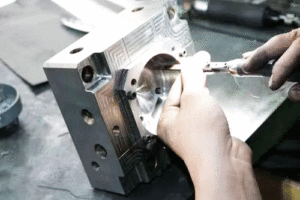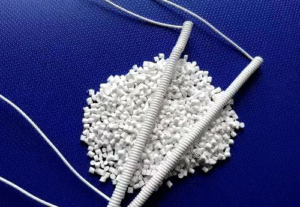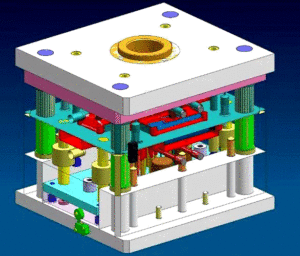
Reasons For The Damage Of Injection Molding Oil Hydraulic Pump
The role of injection molding Oil hydraulic pump
The pump is the “heart” of any oil hydraulic system. Therefore, whenever there is a problem with the oil hydraulic system, we will know it is for the pump. If the pump’s working condition is getting worse, it will show up in the oil hydraulic system. And that already hides other problems.

Common causes of pump damage
1. Aeration
Aeration refers to a phenomenon in which air bubbles disperse in the hydraulic oil of the system. And this bursting effect occurs when compressed air bubbles in the oil system are exposed to pump outlet pressure. While this cracking effect will cause the metal surface of the pressure side plate and the wear-resistant side plate inside the pump near the cracking point to peel off, resulting in extremely high temperature there.
When aeration, the pump will produce a loud crackling noise. The pitch of this noise increases as the pressure rises, and excessive aeration can result in emulsification of the hydraulic fluid (due to the high amount of moisture in the air). Moreover, the air compression in the hydraulic oil may also cause problems like hydraulic components of various parts can’t move smoothly.
Possible reasons that lead to aeration into the pump:
① Bad shaft seal.
② The junction between the fuel tank and the pump inlet part leaks.
③ The oil level is too low, or after returning to the oil tank, the oil pipe is installed on the oil surface, causing the hydraulic oil in the oil tank to generate air bubbles. And it’s sucked by the pump again before the air bubbles are eliminated.
2. Cavitation
Cavitation refers to a localized gasification phenomenon that exists in the fluid of hydraulic oil when the pressure is reduced below the saturated vapor pressure. To put it more simply, when the hydraulic oil does not completely fill the space (that is, there is a vacuum in the oil circuit) , it will cause the cavitation.
The noise caused by cavitation is roughly similar to the noise caused by aeration. While the factors for cavitation are:
① The matching problem of the pump with the electric motor causes the pump speed to be too high.
② The pump suction line is too long, or the suction port is limited.
③ The viscosity of hydraulic oil is too high.
④ Check whether the exhaust port on the fuel tank is plugged.
⑤ Check the filter screen of the pump suction port.
3. Contamination
Any foreign matter in the hydraulic system circuit will have a negative impact on the hydraulic components and the efficiency of their circuits. As for the contaminated foreign matter, it may be solid, liquid or gaseous.
Most foreign matter contamination will cause frictional movement between the workpiece and the tight clearance of the workpiece. And that will lead to accelerated wear and tear of the workpiece.
The pollution sources in the oil circuit can be roughly divided into:
① Casting oil cylinder, oil block, inside of oil tank, pipe joint, etc.
② The oil seal or O-ring is brittle and broken.
③ Hydraulic oil deteriorates under high temperature for a long time, resulting in oil pollution.
④ The pump causes the substances peeling off the metal surface due to aeration or cavitation.
4. Excessive heat
Excessive heat is a thermal phenomenon that the fluid viscosity changes due to exceeding the specified upper limit temperature. Overheating will cause accelerated oxidation of hydraulic oil and deterioration of hydraulic oil viscosity, and further resulting in a chain reaction. Therefore, the real root cause of overheating must be eliminated to effectively correct this problem.
The causes of overheating are:
① Overload operation and overpressure use.
② Aeration by air mixing and cavitation.
③ Oil pollution.
5. Over-pressurization
Over-pressurization means that the operating pressure is greater than the designed pressure of the pump. Over-pressurization can subject the internal parts of the pump to extreme forces and cause premature failure of the internal parts.
All of the reasons mentioned above will leave their characteristic signs of damage. It is important to recognize and understand the messages that these signs bring. In this way, the actual cause of damage to the pump can be corrected before the other pump is damaged.


